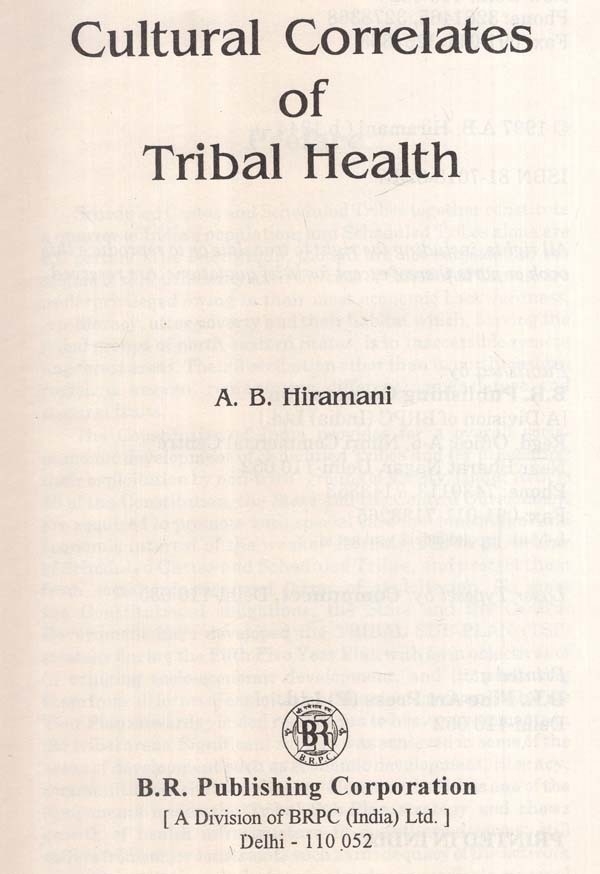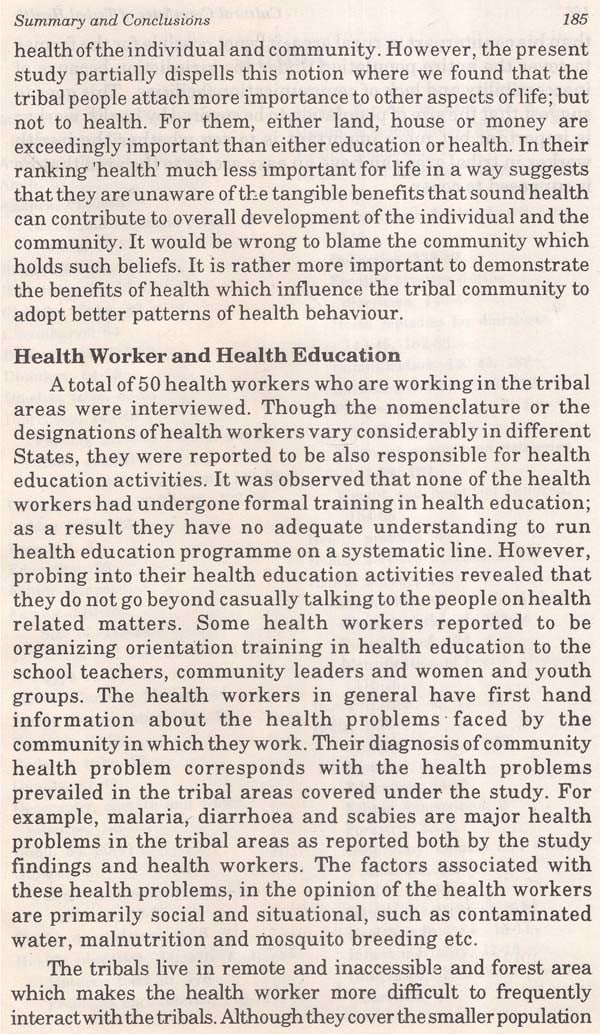
Cultural Correlates of Tribal Health
Book Specification
| Item Code: | AZE569 |
| Author: | A.B. Hiramani |
| Publisher: | B.R. PUBLISHING CORPORATION |
| Language: | ENGLISH |
| Edition: | 1997 |
| ISBN: | 9788170188230 |
| Pages: | 196 |
| Cover: | HARDCOVER |
| Other Details | 9.00x600 |
| Weight | 350 gm |
Book Description
The research work of the study was spread over four states-Andhra Pradesh, Gujarat, Maharashtra and Orissa, covering 1,642 households, drawn from 16 tribal groups in Andhra Pradesh, 8 in Gujarat, 4 in Maharashtra and 10 in Orissa.
The notable findings of the study suggest that the cultural attributes of the tribals have great influence on some aspects of health while external factors on other aspects.
A very useful book for those interested in the health status of the tribals and also for those who work for the welfare of the tribals.
Dr. Hiramani, one of the leading behavioral scientists in the country, has authored several books on subjects of health, health education, health education planning, research and training, besides publication of innumerable articles on these subjects in national and international journals of repute.
The Constitution of India provides for a overall socio economic development of Scheduled Tribes and for preventing their exploitation by non-tribal groups of society. Under Article 46 of the Constitution, the State and the Central Government are required to promote with special care the educational and economic interest of the weaker sections; and in particular of Scheduled Castes and Scheduled Tribes, and protect them from social injustice and forms of exploitation. To meet the Constitutional obligations, the State and the Central Government have developed the TRIBAL SUB-PLAN (TSP) strategy during the Fifth Five Year Plan with twin objectives of (I) bringing socio-economic development, and (ii) protecting them from all forms of exploitation. The strategy from Fifth Five Year Plan onwards yielded results due to heavy investments in the tribal areas. Significant success was achieved in some of the areas of development such as economic development, literacy, communication, civil supplies etc.
**Contents and Sample Pages**











